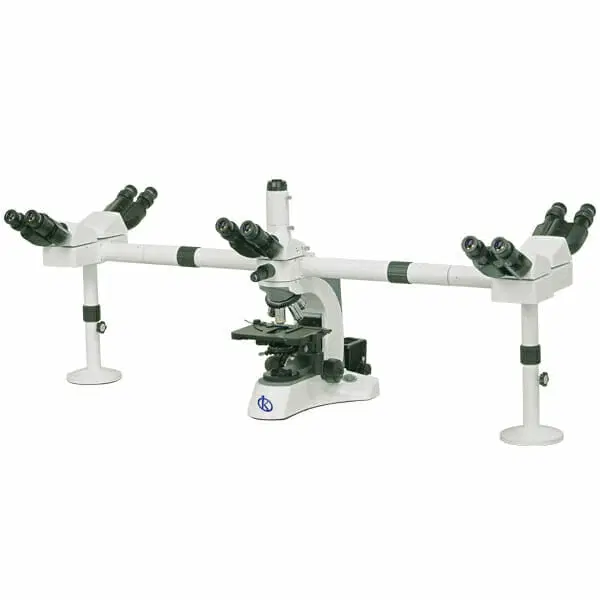High-powered microscope is often unable to provide excellent quality images due to improper use of light sources, which generally leads to inadequate illumination of the object. You must take into account that any correctly illuminated sample must be free of glare and the light must be scattered evenly in the visual field.
What are the main sources of illumination for a microscope?
Halogen Lamps: Halogen lighting provides white light, which is recommended for most microscope uses. But since it is a type of hot light it is not a good idea to use it to observe live specimens.
LED lamps: Using a microscope with LED lighting is a good alternative to halogen, since the light it emits is a blue hue and the temperature does not affect the object being observed.
Ultraviolet Light Lamps: In a microscope that uses ultraviolet light, it obtains radiation with a wavelength of approximately 200 nm, this provides greater resolving power than visible light. This type of lighting is invisible to the human eye, it is not captured by the retina and it is also very harmful; that is why the image is not observed directly, on the contrary it must be visualized by means of fluorescence, photography or a digital sensor.
How do LED lamps on the microscope work?
LED technology offers many advantages that also have enormous benefits in microscopy. A light-emitting diode (LED) is a semiconductor device that emits light when a voltage is applied to its terminals (electroluminescence). Unlike conventional filament bulbs, LED sources are a “cold” light source (they do not generate any heat) and provide high intensity light similar to that of halogen bulbs. LED lamps require very little maintenance, and have a long life. They are also more efficient than tungsten bulbs in the amount of energy they convert into light.
White LED light is particularly useful as an illumination source in microscopy and is produced by adding phosphors to blue LEDs. The LED illumination can be placed on a microscope in a ring shape to allow multi-directional illumination.
What are the main applications of LED lighting?
LED lamps can produce high intensity bright white light to produce excellent illumination for various imaging tasks. It has the advantage of being cold light, and therefore cannot damage heat-sensitive samples or cause temperature-induced changes of focus, which can impact the accuracy of metrology applications. The ability to select directional light from the LED illuminating ring provides opportunities to create shadows or edges for measurement and inspection applications. The system makes possible the observations of extremely low contrast edges which are usually invisible under incident light.
Advantages of LED lighting
- Crisp, natural light for a variety of incident light applications.
- Consumes less energy
- Lasts longer compared to halogen lamps, saving energy and money.
At Kalstein we offer you innovative microscopes of the highest technology and quality. That is why we invite you to take a look at the “Products” menu. HERE


